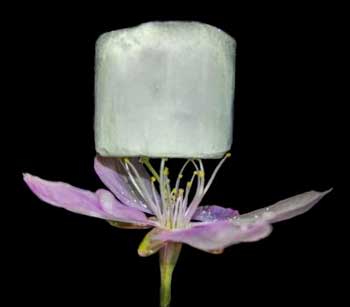Understanding Aerogels: Revolutionary Materials in Nanotechnology
Introduction to Aerogels: Aerogels are ultralight materials characterized by their extreme porosity and low density. Often referred to as "frozen smoke" for their translucent appearance, these materials boast remarkable properties, including excellent thermal insulation, low dielectric constant, and high specific surface area, making them ideal for a range of applications from energy storage to insulation.

Definition and Composition
Aerogels are defined by their unique structure, composed of a network of interconnected nanopores and solid material, which can be made from various substances including silica, carbon, and metal oxides. The choice of base material determines the aerogel's specific properties and potential applications.
Production Process
The creation of aerogels involves two main steps: the formation of a gel and the removal of the liquid component while preserving the gel structure through supercritical drying. This process eliminates the surface tension effects that would normally collapse the gel's structure during drying.
Comparison with Hydrogels
Unlike aerogels, which are characterized by their dry, porous structure, hydrogels are water-swollen, three-dimensional networks of hydrophilic polymers. Both share a gel-like structure, but their physical states and applications differ significantly, with hydrogels often being used in biomedical applications for their ability to retain water.
Key Properties and Applications
Aerogels stand out for their exceptional thermal insulation capabilities, making them suitable for use in building insulation, aerospace, and the apparel industry. Their high surface area and porosity also make them excellent candidates for applications in catalysis, environmental cleanup, and energy storage solutions.
Innovative Uses in Technology and Environment
From enhancing energy efficiency in buildings to protecting electronic components and supporting the development of next-generation batteries, aerogels are at the forefront of technological innovation. Their unique properties also offer solutions for environmental challenges, such as oil spill cleanup and air purification.
Aerogels, with their exceptional properties, play a pivotal role in the field of nanotechnology, serving as a cornerstone for innovation and development across a broad spectrum of applications. Characterized by their ultra-lightweight nature, high porosity, and extensive surface area, aerogels are synthesized through a process that replaces the liquid component of a gel with air, resulting in a solid with remarkable thermal insulation capabilities, among other unique attributes.
In nanotechnology, aerogels are leveraged for their ability to enhance energy efficiency, support the development of advanced insulation materials, contribute to lightweight yet strong composite materials for aerospace, and facilitate the creation of next-generation batteries and sensors with improved performance and sensitivity. Their porous structure makes them ideal for applications requiring low density and high surface area, including environmental cleanup, where they can absorb pollutants efficiently, and in medical applications, where their biocompatibility and structure are advantageous for drug delivery systems.
The integration of aerogels into nanotechnology underscores their versatility and potential to drive technological advances in energy, environmental, and health sectors, demonstrating the power of merging material science with nanoengineering to solve complex challenges.
Advancements in Aerogel Technology
Ongoing research is focused on making aerogels more accessible and versatile. This includes developing more cost-effective production methods and tailoring aerogels for specific applications through the modification of their chemical and physical properties.
Implications for Future Innovations
The versatility and unique characteristics of aerogels position them as a key material for future innovations in various fields, including sustainable construction, clean energy technologies, and beyond. As research progresses, the potential applications of aerogels continue to expand, promising to address some of the most pressing challenges of our time.
Further Reading
Journal of Sol-Gel Science and Technology, Multifunctional Aerogels: A comprehensive review on types, synthesis and applications of aerogels
materialstoday Chemistry, A review on multifunctional aerogel fibers: processing, fabrication, functionalization, and applications
